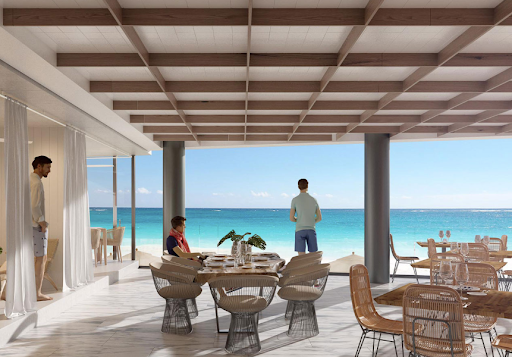Owning a beach investment property for sale isn’t just about numbers on a spreadsheet. It’s about knowing where desire meets scarcity and where smart timing meets the pull of the tide. The idea of coastal ownership isn’t new—but what’s changed is why people chase it. Rising water levels, flexible work lives, and the quiet craving for balance have rewritten what beachfront investing looks like. Those who understand that shift aren’t buying scenery; they’re buying rhythm, longevity, and a slice of something that can’t be replicated inland.
Why Investors Are Turning from Skylines to Shorelines
For years, the hum of city life ruled investment logic. Skyscrapers meant opportunity. But something cracked. The pandemic years made people question why they worked where they lived. Investors started looking outward—towards coastlines within a few hours of major hubs, where the air felt lighter and Wi-Fi still held steady. That’s where the real movement began.
These aren’t traditional vacationers anymore. They’re remote professionals who blend work with retreat. They book longer stays, they pay more for comfort, and they’re changing what “seasonal demand” even means. Suddenly, the beachfront condo that used to go quiet in November stays occupied until spring. The math shifts—more rental months, steadier cash flow, a different kind of tenant altogether.
And here’s the thing—those who still think short-term are losing ground. The investors who see coastal living as a year-round economy are already steps ahead. They’re not chasing summer tourists. They’re renting to long-term dreamers who want to feel the ocean from their desk chair.
Where the Real Value Lives—And It’s Not Always by the Waterline
For decades, “closer to the beach” was gospel. But proximity is no longer the only indicator of worth. A beach investment property for sale, one street back from the shore, elevated, well-zoned, and storm-protected, might outperform the postcard-perfect cottage sitting right on the dunes. Elevation now carries as much value as view.
Municipal planning and infrastructure are the new gold. Towns investing in erosion control, renewable energy, and walkable beach districts are leading the appreciation charts. Investors who ignore these long-term reinforcements risk owning something beautiful yet brittle. The ones who pay attention to drainage maps, zoning updates, and smart coastal restoration own assets that last.
Even rental trends reveal the same shift. Travellers type different words now: “eco-safe”, “sustainable”, and “solar-powered”. They want to be near nature without threatening it. A house that mirrors that ethic earns loyalty. Install a rainwater system, plant native flora, and keep the footprint light—these aren’t aesthetic gestures anymore. They’re marketing, economics, and ethics rolled into one.
Timing and Emotion—The Two Forces Investors Underestimate
Markets move on logic, but beachfronts move on feeling. The ocean sells stories, not statistics. Renters don’t book square footage; they book sunsets, quiet decks, family reunions, and the promise of peace. That’s what creates repeat bookings and word-of-mouth growth. A smart investor leans into that.
And timing—timing is everything. The best opportunities often hide in the off-season when listings sit quietly, waiting. Local owners adjust prices right before the holidays or after peak months. That’s when sharp buyers step in, while everyone else is distracted.
Buying unnoticed and holding through the noise has always been the mark of long-game thinkers. They aren’t chasing the next wave; they’re building something that endures after it breaks.
Reading the Coast Differently
The coastline is no longer just a boundary—it’s an ecosystem of signals. Infrastructure expansion, population shifts, municipal budgets, even art festivals—they all shape property momentum. Smaller towns once dismissed as “too sleepy” now lead in growth because they blend tranquillity with tech access and community.
And then there’s culture. A beach town with real local life—a fishing port, a year-round farmers market, an art walk—keeps value when tourism dips. People return not just for the view but for belonging. The ocean may draw them in, but the town keeps them there.
Those who learn to read these human patterns alongside property data are the ones turning second homes into cornerstone assets. Data gives direction, but intuition builds timing. You don’t buy a coastal home—you interpret it, you predict its story, and you write yourself into it.
Why Now Is the Window That Matters
Inventory is tightening. Not slowly—fast. Retirees, digital workers, and global buyers—they all want the same limited stretch of coast. Meanwhile, local governments are enforcing stricter coastal protection laws, which means less construction, fewer permits, and rising prices for what already exists. Scarcity is quietly setting the rules.
If there’s ever been a moment to look for a beach investment property for sale, this is it. But not blindly. The right property merges resilience with purpose—high elevation, low maintenance, community proximity, and flexible use. Those who rush will overpay. Those who read the rhythm, who buy during quiet tides and hold through the noise, will own more than a house. They’ll hold a story that grows rarer with every tide.

